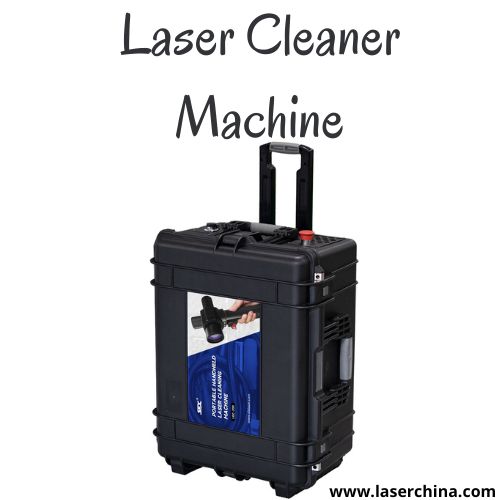Industrial cleaning has gone through several phases of development, from manual scraping to chemical solvents, and later to mechanical blasting methods. Yet, each of these traditional solutions came with certain limitations. This is where the laser cleaner machine has established itself as a groundbreaking technology. Designed to remove rust, paint, grease, oxides, and other contaminants, it operates with precision and consistency, making it suitable for industries that demand accuracy and efficiency.
Unlike traditional cleaning techniques, this machine relies on the controlled use of laser beams to target and vaporize unwanted layers from surfaces. The non-contact process ensures the base material remains intact, which is a critical factor in sectors like aerospace, automotive, electronics, and manufacturing. Over the last decade, adoption of the laser cleaner machine has steadily increased, showing that it is not just a niche solution but an industrial standard in the making.
The Science Behind a Laser Cleaner Machine
At the heart of this machine lies a process known as laser ablation. When a high-intensity beam is directed onto a contaminated surface, the laser energy is absorbed by the unwanted material. This energy rapidly heats and breaks down the targeted layer into particles or vapor, which are then removed by an integrated extraction system.
The selective interaction is what makes the laser cleaner machine unique. The laser wavelength and intensity are carefully calibrated to interact with contaminants rather than the underlying substrate. As a result, metals, ceramics, and composite materials can be cleaned without abrasion, scratches, or chemical residues.
The technology combines precision optics, powerful fiber or solid-state lasers, cooling systems, and ergonomic designs to make the machine both reliable and user-friendly.
Industrial Sectors Embracing the Laser Cleaner Machine
Industries with strict standards of cleanliness and durability have become the earliest adopters of this technology. For example:
- Automotive sector: Car manufacturers and repair facilities use the machine to strip rust and prepare metal components for welding or painting.
- Aerospace industry: Aircraft parts, turbine blades, and fuselage components require contamination-free surfaces for performance and safety. Laser cleaning provides the necessary precision without compromising the material’s structural integrity.
- Electronics: Circuit boards and delicate assemblies benefit from non-abrasive cleaning where mechanical methods would be too harsh.
- Cultural heritage preservation: Museums and restoration experts use laser cleaning to remove dirt, soot, and corrosion from historic artifacts without damaging their surfaces.
- Shipbuilding and heavy machinery: Large steel surfaces affected by corrosion can be treated efficiently, extending their lifespan and reducing downtime.
The versatility of the laser cleaner machine demonstrates its adaptability across vastly different environments, from delicate microelectronics to large-scale industrial operations.
Shaping Modern Manufacturing with Laser Cleaning
Manufacturing today demands higher levels of precision and sustainability. Traditional cleaning often results in waste byproducts, disposal costs, and significant downtime. The laser cleaner machine addresses these issues by streamlining workflows.
For instance, in welding preparation, surfaces cleaned with a laser provide stronger weld bonds compared to surfaces treated with chemical solvents or abrasives. Similarly, in coating applications, a laser-cleaned surface ensures improved adhesion of paint or protective coatings. The ability to produce consistent results makes it an invaluable tool in lean manufacturing environments where quality and efficiency are measured at every step.
Environmental and Operational Impact
One of the most compelling aspects of the laser cleaner machine is its environmental footprint. Since it relies on light energy instead of harsh chemicals, the cleaning process generates little to no secondary waste. Contaminants are either vaporized or collected by extraction systems, eliminating the need for disposal of hazardous materials.
From an operational perspective, the machine reduces maintenance costs because it minimizes wear on the underlying material. Additionally, it is less labor-intensive than manual or abrasive cleaning methods, allowing operators to focus on productivity rather than repetitive, physically demanding work.
Case Example: Automotive Rust Removal
Consider the case of an automotive parts manufacturer struggling with rust on steel components. Traditionally, the company relied on sandblasting and chemical baths, which not only increased operational costs but also caused delays in production schedules. After integrating a laser cleaner machine, rust removal became faster and more consistent. The treated components exhibited better weld quality, reducing rework rates and improving overall efficiency. This shift allowed the company to cut costs while increasing output reliability.
The Future of Surface Treatment
As industries move toward automation and smart manufacturing, the role of the laser cleaner machine is expected to grow. Integration with robotic arms and automated lines is already underway, enabling continuous operation without the need for constant human intervention.
Advancements in laser technology, such as higher beam power and improved cooling systems, are further expanding the range of applications. With increasing pressure on industries to adopt sustainable practices, this technology offers a forward-looking solution that aligns with global environmental regulations.
Final Thoughts
The laser cleaner machine is not merely a replacement for older cleaning methods; it represents a shift toward precision, sustainability, and reliability in industrial operations. By offering a contact-free, residue-free, and highly efficient process, it has proven its value in diverse sectors from automotive to aerospace and beyond. As more industries seek solutions that balance performance with environmental responsibility, the adoption of this machine will continue to expand.
It is clear that the laser cleaner machine is shaping the future of surface preparation and industrial cleaning. For businesses that prioritize efficiency, safety, and sustainability, investing in this technology is a strategic step toward staying competitive in modern markets.

